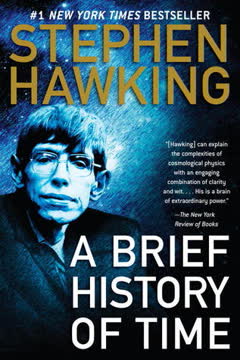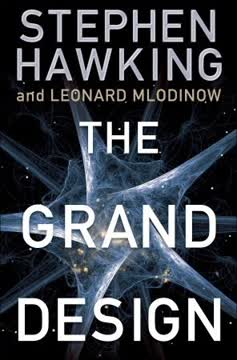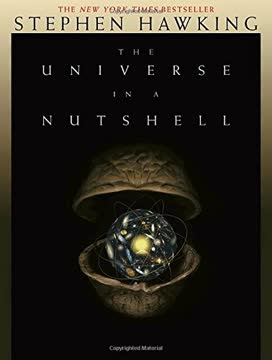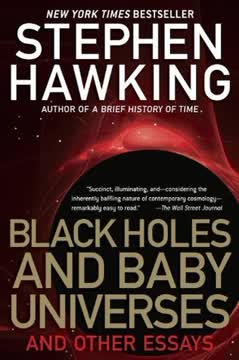Key Takeaways
1. Time and Space Are Not Absolute
"Time was treated as if it were a straight railway line on which one could only go one way or the other."
Revolutionary Perspective. Einstein's theory of relativity fundamentally transformed our understanding of time and space from absolute, fixed concepts to relative, dynamic dimensions that can be experienced differently by different observers.
Key Implications:
- Time is not universal but personal to each observer
- Observers moving at different speeds will measure time differently
- The speed of light remains constant for all observers
Experimental Evidence. Observations like the Michelson-Morley experiment demonstrated that light's speed is consistent regardless of the observer's motion, challenging classical notions of absolute time and space.
2. The Universe Has a Beginning and Expanding Nature
"If the universe had been created without the exclusion principle, quarks would not form separate, well-defined protons and neutrons."
Big Bang Theory. The universe originated from an incredibly dense, hot state approximately 13.8 billion years ago, expanding rapidly and evolving through complex physical processes that ultimately created galaxies, stars, and complex structures.
Cosmic Evolution:
- Initial state was extremely hot and uniform
- Gradual cooling allowed formation of atomic structures
- Expansion continues, potentially forever
- Galaxies formed through gravitational attraction
Observational Confirmation. Edwin Hubble's discovery that distant galaxies are moving away from us provided empirical evidence for the expanding universe model.
3. Quantum Mechanics Introduces Uncertainty and Probability
"Quantum mechanics does not predict a single definite result for an observation. Instead, it predicts a number of different possible outcomes and tells us how likely each of these is."
Probabilistic Universe. Unlike classical physics, quantum mechanics suggests that fundamental particles exist in probabilistic states, with multiple potential outcomes for any given observation.
Key Quantum Principles:
- Particles can exist in multiple states simultaneously
- Observation affects the state of particles
- Precise measurement of position and velocity is impossible
- Randomness is inherent in nature
Revolutionary Implications. This approach challenges deterministic views of the universe, suggesting that fundamental uncertainty is a core feature of reality.
4. Gravity Shapes the Structure of the Universe
"Gravity is the weakest of the four forces by a long way; it is so weak that we would not notice it at all were it not for two special properties that it has: it can act over large distances, and it is always attractive."
Gravitational Influence. Despite being the weakest fundamental force, gravity plays a crucial role in shaping cosmic structures through its long-range, cumulative effects.
Gravitational Characteristics:
- Acts universally on all matter
- Attracts rather than repels
- Determines large-scale cosmic structures
- Fundamental to understanding black holes and cosmic evolution
Einstein's Contribution. General relativity revealed gravity as a curvature of space-time, transforming our understanding from a force to a geometric property of the universe.
5. Black Holes Are Not Truly Black
"Black holes are one of only a fairly small number of cases in the history of science in which a theory was developed in great detail as a mathematical model before there was any evidence from observations."
Quantum Black Hole Properties:
- Emit radiation (Hawking radiation)
- Have finite temperature
- Can gradually evaporate
- Represent extreme gravitational environments
Theoretical Breakthrough. Hawking's work demonstrated that quantum mechanics allows black holes to emit particles, challenging previous understanding of these cosmic phenomena.
Observational Relevance. Black holes provide unique laboratories for testing fundamental physical theories about gravity, quantum mechanics, and space-time.
6. Fundamental Forces Can Be Unified
"Ultimately, however, one would hope to find a complete, consistent, unified theory that would include all these partial theories as approximations."
Unification Quest. Scientists seek a comprehensive theory integrating gravity, electromagnetic, strong, and weak nuclear forces into a single, coherent framework.
Theoretical Approaches:
- String theory
- Quantum gravity models
- Grand Unified Theories (GUTs)
- Exploring extra dimensions
Challenges. Current theories struggle to completely reconcile quantum mechanics with gravitational effects at microscopic scales.
7. The Arrow of Time and Entropy
"Disorder increases with time because we measure time in the direction in which disorder increases."
Thermodynamic Time Direction. The universe tends towards increasing disorder, creating a fundamental "arrow of time" that distinguishes past from future.
Key Time Arrows:
- Thermodynamic arrow (entropy increase)
- Psychological arrow (memory progression)
- Cosmological arrow (universe expansion)
Philosophical Implications. Our perception and experience of time are intrinsically linked to the universe's tendency towards greater complexity and randomness.
8. The Universe Might Be Self-Contained
"The universe would be completely self-contained and not affected by anything outside itself. It would neither be created nor destroyed. It would just BE."
No-Boundary Proposal. The universe might exist without external causation, emerging from quantum fluctuations with inherent mathematical consistency.
Theoretical Considerations:
- Space-time could be finite yet boundless
- No need for external creator
- Governed by intrinsic mathematical laws
Radical Perspective. Challenges traditional theological and philosophical views about cosmic origins.
9. Scientific Theories Are Mathematical Models of Observation
"A scientific theory is just a mathematical model we make to describe our observations: it exists only in our minds."
Scientific Methodology. Theories represent human attempts to mathematically describe and predict observable phenomena, acknowledging their provisional and evolving nature.
Theory Characteristics:
- Predictive capabilities
- Empirical testability
- Subject to revision
- Approximations of reality
Epistemic Humility. Recognizes scientific knowledge as an ongoing process of understanding rather than absolute truth.
10. Human Existence Is a Remarkable Cosmic Accident
"The remarkable fact is that the values of these numbers seem to have been very finely adjusted to make possible the development of life."
Anthropic Principle. Our existence depends on an extraordinarily precise configuration of universal constants and physical laws.
Cosmic Improbability:
- Minute variations in fundamental constants would prevent life
- Complex structures emerge from initially simple conditions
- Human consciousness represents an unlikely cosmic outcome
Philosophical Reflection. Highlights both the randomness and the potential purposefulness of our universe's design.
Last updated:
FAQ
What's "A Brief History of Time" about?
- Exploration of the Universe: "A Brief History of Time" by Stephen Hawking explores the nature of the universe, discussing its origins, structure, and eventual fate.
- Complex Concepts Simplified: The book aims to explain complex scientific concepts like black holes, the big bang, and quantum mechanics in a way that is accessible to non-scientists.
- Unified Theory: Hawking discusses the quest for a unified theory that combines general relativity and quantum mechanics to explain all physical aspects of the universe.
- Philosophical Implications: It also delves into the philosophical implications of scientific discoveries, questioning the role of God and the nature of time.
Why should I read "A Brief History of Time"?
- Understanding the Universe: It provides a comprehensive overview of the universe's workings, making it essential for anyone interested in cosmology and physics.
- Accessible Science: Hawking's ability to simplify complex ideas makes it a great read for those without a scientific background.
- Intellectual Curiosity: The book challenges readers to think about profound questions regarding existence, time, and the universe.
- Cultural Impact: As a bestseller, it has influenced both scientific and popular culture, making it a significant work in modern literature.
What are the key takeaways of "A Brief History of Time"?
- Nature of Time: Time is not absolute and is intertwined with space, forming a four-dimensional space-time continuum.
- Black Holes: Black holes are regions where gravity is so strong that nothing, not even light, can escape, and they can emit radiation.
- Big Bang Theory: The universe began with a big bang, a singularity where all known laws of physics break down.
- Unified Theory: The search for a unified theory that combines general relativity and quantum mechanics is ongoing and crucial for understanding the universe.
What are the best quotes from "A Brief History of Time" and what do they mean?
- "If time travel is possible, where are the tourists from the future?" This quote highlights the paradoxes and challenges associated with the concept of time travel.
- "The universe doesn't allow perfection." It suggests that imperfections and uncertainties are inherent in the universe, aligning with the principles of quantum mechanics.
- "The boundary condition of the universe is that it has no boundary." This reflects Hawking's no-boundary proposal, suggesting the universe is finite but without edges or singularities.
- "We are just an advanced breed of monkeys on a minor planet of a very average star." This quote emphasizes the insignificance of human existence in the vast universe.
How does Stephen Hawking explain black holes in "A Brief History of Time"?
- Definition and Nature: Black holes are regions in space where gravity is so strong that nothing can escape from them, not even light.
- Event Horizon: The boundary around a black hole is called the event horizon, beyond which nothing can return.
- Hawking Radiation: Hawking theorizes that black holes can emit radiation due to quantum effects near the event horizon, leading to their eventual evaporation.
- Singularity: At the center of a black hole lies a singularity, a point of infinite density where the laws of physics as we know them cease to function.
What is the significance of the big bang theory in "A Brief History of Time"?
- Origin of the Universe: The big bang theory posits that the universe began from an extremely hot and dense singularity and has been expanding ever since.
- Cosmic Microwave Background: The theory is supported by the discovery of cosmic microwave background radiation, the afterglow of the big bang.
- Time and Space: It suggests that time and space themselves began with the big bang, challenging the notion of a universe existing eternally.
- Scientific and Philosophical Impact: The big bang theory has profound implications for understanding the universe's origin and the nature of time.
How does "A Brief History of Time" address the concept of time?
- Relative Time: Time is not absolute but relative, varying for different observers depending on their velocity and gravitational field.
- Imaginary Time: Hawking introduces the concept of imaginary time, which is indistinguishable from directions in space and helps in understanding the universe's boundaries.
- Arrow of Time: The book discusses the thermodynamic, psychological, and cosmological arrows of time, explaining why time seems to move in one direction.
- Time's Beginning and End: It explores the idea that time began with the big bang and may end with the big crunch or in black holes.
What is the role of quantum mechanics in "A Brief History of Time"?
- Uncertainty Principle: Quantum mechanics introduces uncertainty, meaning we cannot predict exact outcomes, only probabilities.
- Wave-Particle Duality: Particles can exhibit properties of both waves and particles, challenging classical physics' distinct categories.
- Quantum Gravity: The book discusses the need to unify quantum mechanics with general relativity to form a complete theory of quantum gravity.
- Impact on Cosmology: Quantum mechanics plays a crucial role in understanding the early universe and phenomena like black hole radiation.
How does Stephen Hawking approach the search for a unified theory in "A Brief History of Time"?
- Grand Unified Theories (GUTs): Hawking discusses attempts to unify the electromagnetic, weak, and strong nuclear forces into a single framework.
- Challenges with Gravity: The main challenge is incorporating gravity, described by general relativity, with quantum mechanics.
- String Theory: The book explores string theory as a potential candidate for a unified theory, where particles are one-dimensional strings.
- Ultimate Goal: The search for a unified theory aims to provide a complete understanding of the universe's fundamental forces and particles.
What is the anthropic principle as discussed in "A Brief History of Time"?
- Weak Anthropic Principle: It suggests that the universe's laws appear fine-tuned for life because only in such a universe could observers like us exist.
- Strong Anthropic Principle: This version posits that the universe must have properties that allow life to develop at some stage in its history.
- Role in Cosmology: The anthropic principle is used to explain why the universe has the conditions necessary for life, despite the vast number of possible configurations.
- Philosophical Implications: It raises questions about the role of chance and necessity in the universe's design and our place within it.
How does "A Brief History of Time" address the concept of imaginary time?
- Mathematical Tool: Imaginary time is used as a mathematical tool to simplify calculations in quantum mechanics and cosmology.
- No Boundary Proposal: Hawking's no boundary proposal uses imaginary time to suggest that the universe is finite but without boundaries or singularities.
- Distinction from Real Time: In imaginary time, the distinction between past and future disappears, unlike in real time, where time has a clear direction.
- Implications for the Universe: Imaginary time allows for a universe that is self-contained and without a beginning or end, challenging traditional notions of creation.
What are the philosophical implications of "A Brief History of Time"?
- Role of God: The book questions the necessity of a creator if the universe can be explained by a self-contained set of laws.
- Nature of Reality: It challenges traditional views of reality, suggesting that time and space are not absolute and may have different properties than perceived.
- Human Significance: Hawking emphasizes the insignificance of human life in the vast universe, prompting reflection on our place and purpose.
- Quest for Knowledge: The pursuit of a unified theory represents humanity's ongoing quest to understand the universe and our existence within it.
Review Summary
A Brief History of Time is a popular science book that explains complex physics concepts like relativity, quantum mechanics, and cosmology to a general audience. While praised for its accessibility, many readers found parts challenging to understand fully. Hawking's clear writing and attempts to address profound questions about the universe were appreciated. The book covers topics like black holes, the Big Bang, and the search for a unified theory of physics. Some criticized Hawking's philosophical speculations, but overall the book was highly influential in popularizing modern physics.
Similar Books
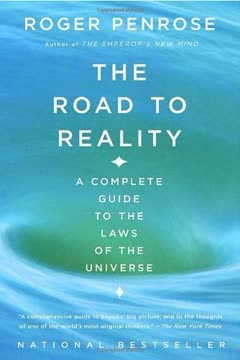





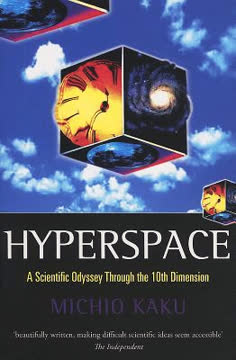
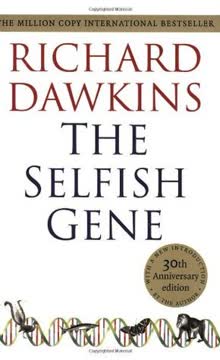
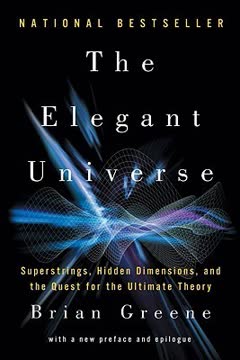
Download PDF
Download EPUB
.epub digital book format is ideal for reading ebooks on phones, tablets, and e-readers.
